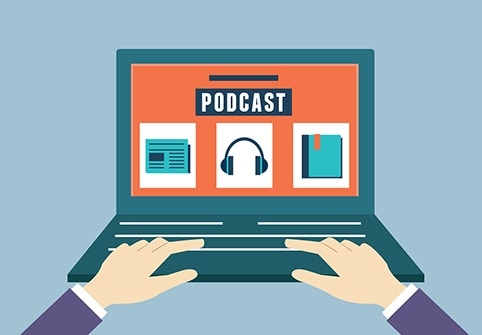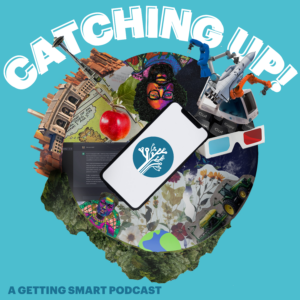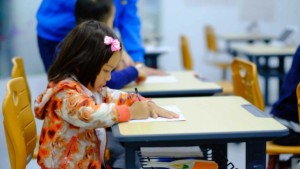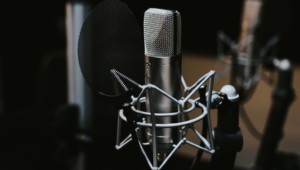Power of Podcasting for Student Learning

Monica Brady-Myerov
Listening to the Getting Smart podcast about student-centered learning made me think about the power of podcasting as a vehicle for student learning. Podcasts as a medium have taken off.
Over the last two years, podcasts have steadily grown their audiences. According to a study by the Pew Research Center, one-third of all Americans over the age of 12 have listened to a podcast. Young people are also some of the most devoted listeners.
Anyone with access to a phone or computer can create a podcast seamlessly. This means the tools are in the hands of students. Podcasts can be a vehicle for students to find their passions and voice. The process of creating fosters ownership of learning.
I can speak to these values after spending decades as a radio reporter in public radio. I spent a career creating small audio podcasts on current news or topics of interest that aired on public radio. I took this love and turned it into a company. Listenwise curates public radio stories and adds teaching resources so middle and high school teachers can use audio in the classroom. We at Listenwise are also experimenting and helping teachers support their students making podcasts.
Student-Centered Learning
Recently we worked with 5th grade teacher Shalini Rao at The Park School to guide her students in making a podcast. They studied immigration in-depth throughout the year and used stories on Listenwise such as Coming to America to hear immigrant voices, understand varied perspectives and connect modern day immigration stories to history.
Student’s interest catalyzed the podcasts. In their final project, called “The Immigrant Journey”, students chose stories and selected a medium to tell them. They interviewed local immigrants about their transition from their home country to America. In the past, students created posters, books and powerpoint presentations of these stories. This year, in collaboration with Listenwise, The Park School added podcasting as an option.
Podcasting Leads to Deeper Learning
By starting where a student already has an interest, Ms. Rao wanted students to connect with people and topics that interested them. She also believed that by including audio, there would not only be student interest on the technical side but an emotional connection through the immigrant’s voice. Listening to their stories, asking questions, and editing their audio all made the learning process a much deeper experience.
Storytelling is a powerful tool for deeper learning because when you are telling a story you have internalized information and are able to relay it to someone else. That is the Holy Grail of teaching. When conducting an audio interview, students must do research for the interview, prepare the questions, ask and record the answers and then listen back, often several times, to make their audio selection. This review process helps them internalize the information. Otherwise, they can’t tell a good story for their podcast.
At The Park School students used their iPads to record interviews with immigrants who visited their classrooms. They all listening back to those interviews several times. They edited the interviews and in some cases combined them with posters, artifacts and written stories to make a multi-media presentation of each person’s immigration story. You can listen to some of the final podcasts here.
- Getting Smart Podcast | Tom Vander Ark on Why Talent Matters
- 60 Podcasts You Should Check Out
- Getting Smart Podcast | Smart Parents
Monica Brady-Myerov is Founder & CEO of Listenwise and a long time public radio reporter, most recently with WBUR. Follow Monica on Twitter, @bradymyerov.
Stay in-the-know with all things EdTech and innovations in learning by signing up to receive the weekly Smart Update.







0 Comments
Leave a Comment
Your email address will not be published. All fields are required.